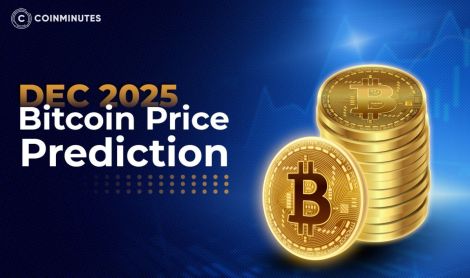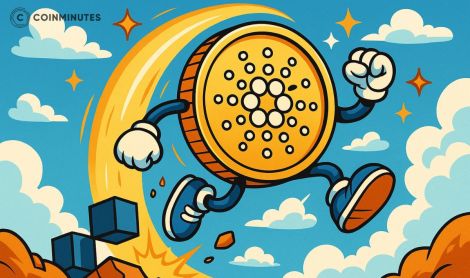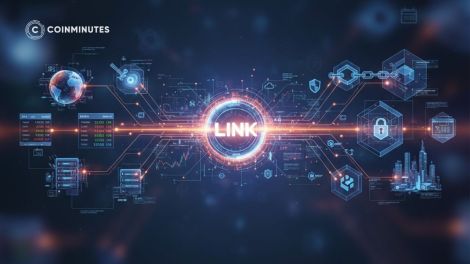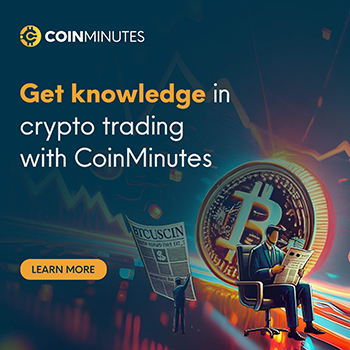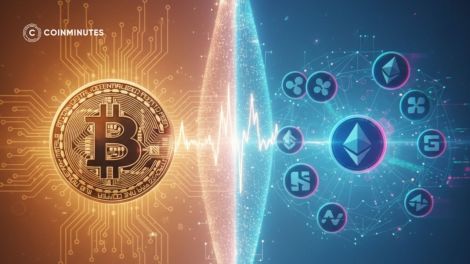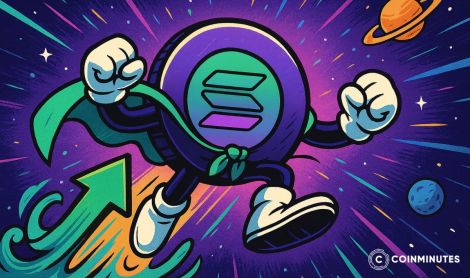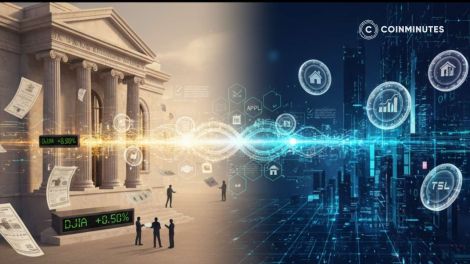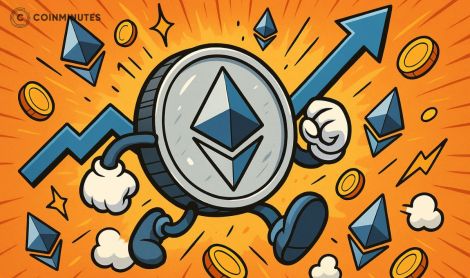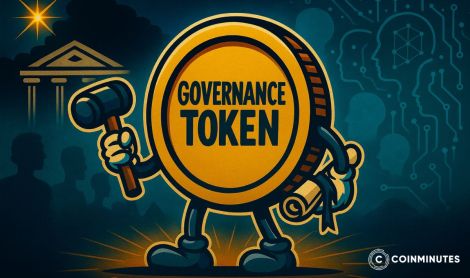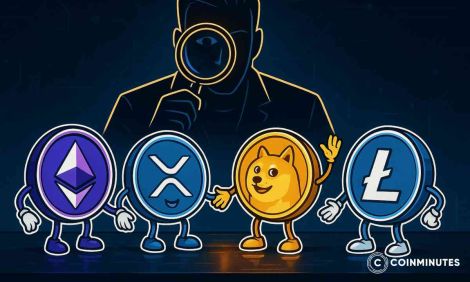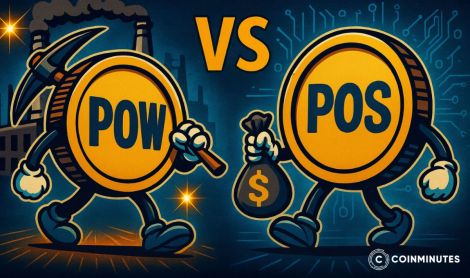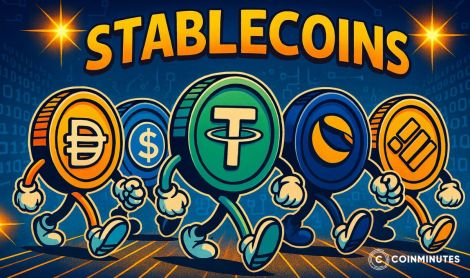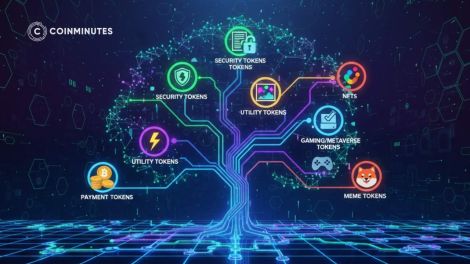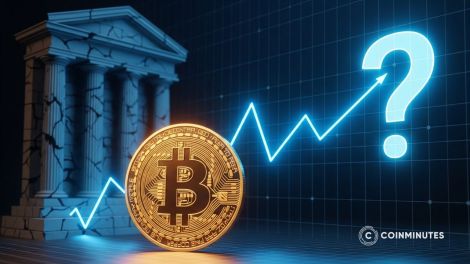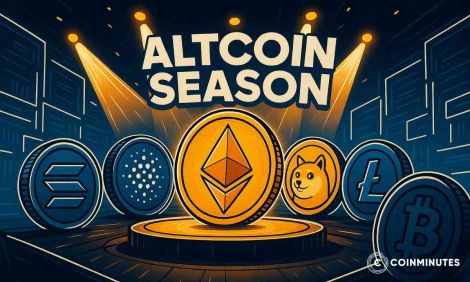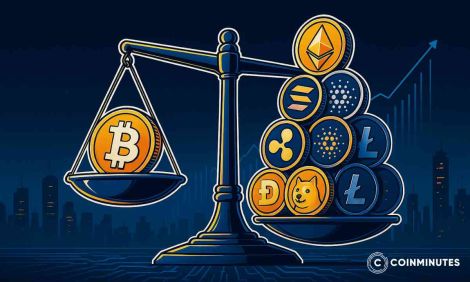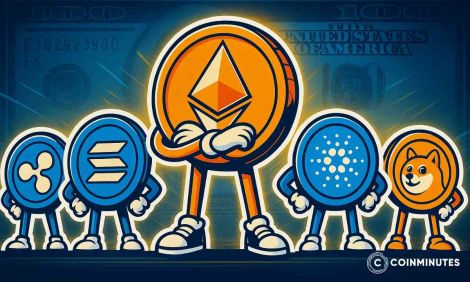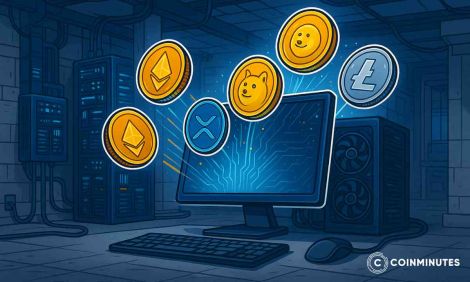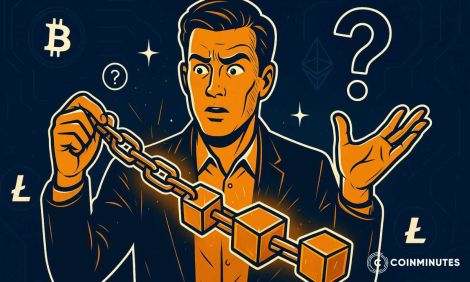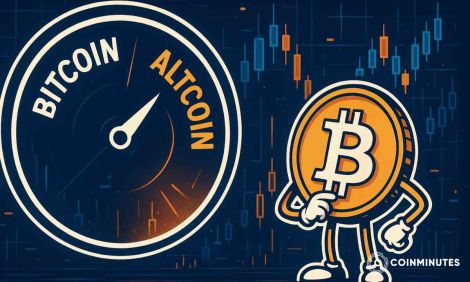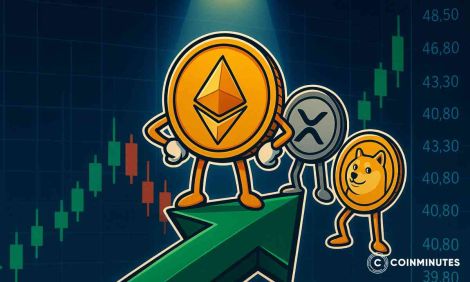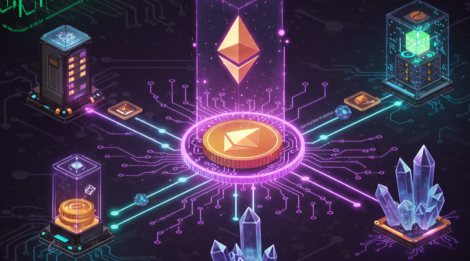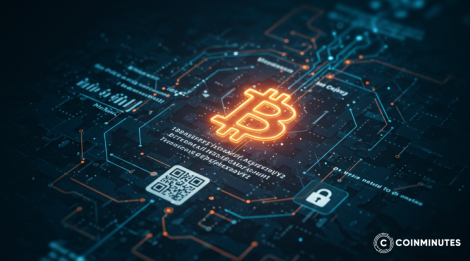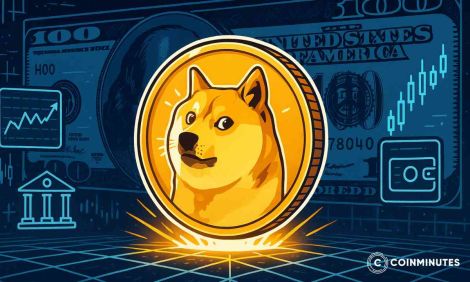Best Altcoins to Invest: A Step-by-step Guide on How to Buy Altcoins Safely and Easily
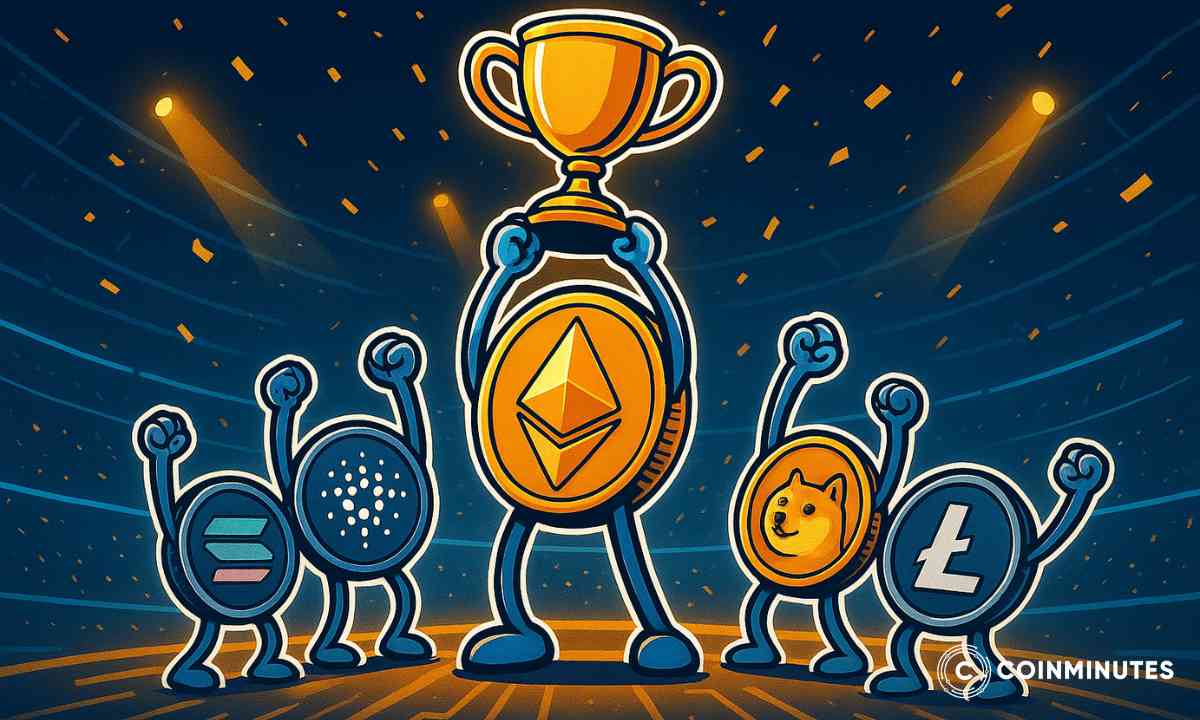
The cryptocurrency market offers a wide range of investment opportunities beyond Bitcoin. These alternative assets, known as altcoins, are a key driver of innovation in the digital asset space. However, the complexity and volatility of the altcoin market require a disciplined and well-researched approach from investors.
This guide provides a framework for identifying, evaluating, and investing in altcoins. It covers a clear definition of altcoins, a detailed analysis of ten established projects to begin your research for 2025, the potential benefits and significant risks of investing, and a step-by-step process for purchasing and securing these assets safely. This information is for educational purposes and is not financial advice. All investment decisions should be based on your own thorough research and risk assessment.
This is CoinMinutes. Let's bring order to the pandemonium.
Altcoins’ Definition
Let's get this out of the way. It's super simple.
An "altcoin" is just an "alternative coin." It's any cryptocurrency that isn't Bitcoin.
That's it.
Bitcoin was the first, the OG, the one that started it all. Every single other coin that came after it—all 20,000+ of them—is an altcoin. Some were created to try and be a "better Bitcoin" (faster, cheaper, whatever). Others were designed to do completely new things that Bitcoin was never built for.
Think of it like this: Bitcoin is the original, classic rock and roll. Altcoins are every other genre of music that came after: hip hop, electronic, punk rock, you name it. They all share some DNA, but they're trying to do very different things.
Best Altcoins to Invest in 2025
Alright, let's get to the list. These are ten of the most established, well-known, and widely available altcoins in the game. This isn't a "buy these now!" list. It's a "start your research here" list. These are the projects that have been around, have real teams, and are trying to build something meaningful.
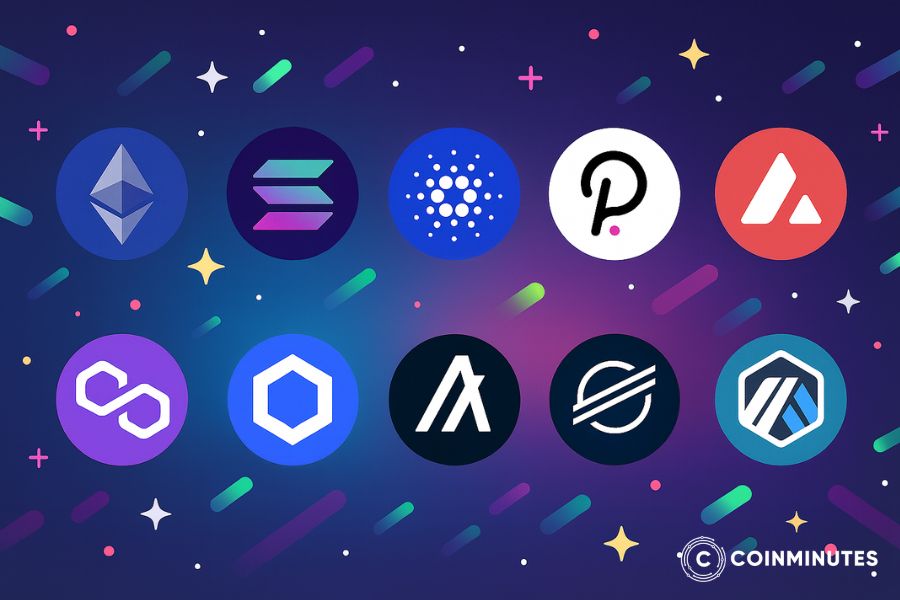
Ethereum (ETH)
Ethereum is the leader of altcoins. The World's most powerful decentralized supercomputer is what one may call it rather than a coin. It is the base layer where essentially everything fascinating in the crypto space, like DeFi and NFTs, comes from. ETH is the native currency of the Ethereum network. You use it to pay "gas fees," which are the charges for using the network's applications.
Ethereum is just the second-largest crypto asset after Bitcoin. In other words, it's as "blue-chip" as it gets in the altcoin universe. It’s got a big community, has been around for a long time, and is very popular with investors.
Ethereum is a network and thus, it gets slow and costly when there are too many transactions, just like congested city roads during rush hour. Rivals are always plotting how to take over its position.
Solana (SOL)
Solana stands for speed and efficiency. Its whole ground is just to be extremely fast and super cheap. So, practically it's a platform for instant transactions and it can be used for things as different as high-frequency trading or a fast gameplay. The SOL coin is like the 'gas' used to pay for the transactions on the network, and also for the 'staking' - which means you help the network to be kept secure (and get some rewards in return).
Solana is a very high-quality project that has a lot of different use cases and is making a lot of people talk about it. Basically, it's super easy and really cheap to use, which, in turn, is what makes it a great chain to play around with.
Over time, Solana has been most vulnerable to its non-stop reliability as its network has completely shut down a few times in history. Imagine it as a very high-speed car that suddenly just comes to a halt...
Polygon (MATIC)
Polygon is not Ethereum's rival but its ally. It is not aiming to replace Ethereum but to support it. Simply put, it is like an extra lane for Ethereum that allows faster and cheaper transactions. MATIC is the token that is used to pay the fees on the Polygon network and for staking.
The goodness of the project is that its fate is intertwined with that of Ethereum which is a very strong and trustworthy horse to follow. Although it has its own huge ecosystem, most of the projects are on it just because they want to get away from the high fees of Ethereum.
Polygon is confronted with great competition from numerous other "Layer 2" solutions that are also striving to help Ethereum.
Cardano (ADA)
Cardano is the deliberate, step-by-step academic of the bunch. Its process is extremely slow because every single thing is based on peer-reviewed scientific papers. The people there believe in measuring ten times and cutting once. ADA is a multi-purpose token that can be used for paying transaction fees and in staking, which is very simple on the Cardano network.
The project has a huge and extremely loyal community that really likes its slow-and-steady approach. For people who are sick of the "move fast and break things" crypto culture, Cardano's philosophy is like music to their ears.
The slow pace of development has resulted in Cardano being far behind in the number of apps and users. It is always a bit late to get in the game.
Avalanche (AVAX)
Avalanche is another leading rival of Ethereum. Besides that, it's very quick and famous for its "subnets" which allow projects to have their own separate blockchains. AVAX is the main token for fees and staking. One of the nice aspects is that the fees are "burned" (removed), which might lower the total supply gradually.
This one is a top project that has demonstrated its capability to draw serious money and big-name applications, particularly in the DeFi and gaming sectors. Avalanche is in a battle to the death with Ethereum, Solana, and at least a dozen other platforms for market share. It's a highly competitive space.
Polkadot (DOT)
Polkadot is trying to be "the internet of blockchains." Its main objective is to have all the different, separate blockchains to actually communicate with each other. The DOT token is responsible for network governance (voting), security (staking), as well as for integrating new chains into the network.
The project is addressing a massive problem that matters in the blockchain space and it is coming from the team of one of the co-founders of Ethereum, which gives it a lot of credibility. It's a daring, long-term initiative. However, the technology is quite complicated and sometimes it is difficult to understand it. It is perceived as a very nice infrastructure material rather than an everyday item.
Chainlink (LINK)
Chainlink is the provider of external data for the blockchain environment. Smart contracts are limited in function; they cannot get external data by themselves. Chainlink is a system of "oracles" that safely delivers to them such things as stock prices, weather data, or the score of the game. The LINK token is the payment that is made to the data providers for the services they offer.
Chainlink is a component that is very important for the whole crypto world. Nearly every big DeFi app utilizes Chainlink. Therefore, it is not so much a gamble on a single platform but more of a wager on the whole smart contract ecosystem’s expansion. The triumph of Chainlink is reliant upon the crypto projects that require its data. If DeFi decelerates, Chainlink also declines.
Algorand (ALGO)
Algorand is the genius one, a product of the brilliant mind of an MIT professor. Its strength lies in the sound and solid technology it presents and in its focus to be a secure and dependable platform for the use of the real world, like handling transactions of big financial institutions. ALGO is the unit used for paying fees and for the network's security.
The project has a strong reputation from the tech side and is extremely user-friendly for staking and the like. It is a project that receives a lot of attention from smart people.
Despite having all the brainpower, Algorand has not attracted as many users and developers as some of its rivals. It's the archetype of "wonderful technology, just needs more promotion" story.
Stellar (XLM)
Stellar is the thing that anyone would like to use if they wanted to send money to somebody quickly and cheaply. To be more precise, it is a network, which allows you to make international money transfers with minimum charges and time along with connecting banks and payment companies that are located in the rest of the world, especially in the underdeveloped countries. The XLM is a digital currency that is used to pay a small transaction cost and as a "bridge" that allows you to transfer a value from one currency to another.
Stellar is not a new coin because it was established in 2014, thus it is one of the cryptocurrencies that can be considered "ripe" in the market. Also, it has a rather simple goal, which most people can understand and it has managed to get some significant allies over the years, if not directly, but at least through the shared mission.
Arbitrum (ARB)
Arbitrum is another great companion of Ethereum, and it's the leader in the Layer 2 race at the moment. It essentially wraps up transactions off the main Ethereum chain, thus making them much faster and cheaper by a large margin. The ARB token is mainly used for voting purposes, i.e. holders decide the direction of the network by the votes they cast.
This is the largest and most-used Layer 2, thereby the home of the most popular DeFi apps. In case you want to use crypto apps without spending a fortune on Ethereum gas fees, Arbitrum is the place you will most likely be. Though, the Layer 2 space of Arbitrum is dynamic i.e. it is subject to change. The current king may be dethroned by new tech.
Why Should You Invest in Altcoins?
Alright, so they are not only risky but also confusing. Still, why would anyone invest in them? The most common explanations of why it happens are usually a combination of seeking high profits and having faith in the technology.
Potential Benefits
Honestly, what mainly attracts people to the idea is the massive growth potential. Bitcoin has grown into a behemoth already. So for its value to double, it needs a huge amount of new buying. On the other hand, a small altcoin that is hardly known? If it gets to be popular, it can experience its price to increase exponentially in a manner that is just not available for Bitcoin any longer. These are the 10x or 100x returns that you come across. They cannot be compared to any other returns, so they are extremely rare, similar to one being able to find a needle in a haystack made of other needles, but still, they occur.
Moreover, another positive aspect is diversification. Betting on Bitcoin with all your money is a very concentrated way of doing it. You may consider distributing your investment among various types of altcoins, for example, a platform coin, a gaming token, and a DeFi project so as to balance your risk. Even though the overall market tends to be synchronized, different sectors may have periods of their own to prosper.
And the last point is that it is an opportunity to get in at the ground level of a new technology. The altcoin universe is where the experimentation is happening. When you believe in decentralized social media as the future or in the growth of crypto gaming, then you can put money into the projects that are really making it happen.
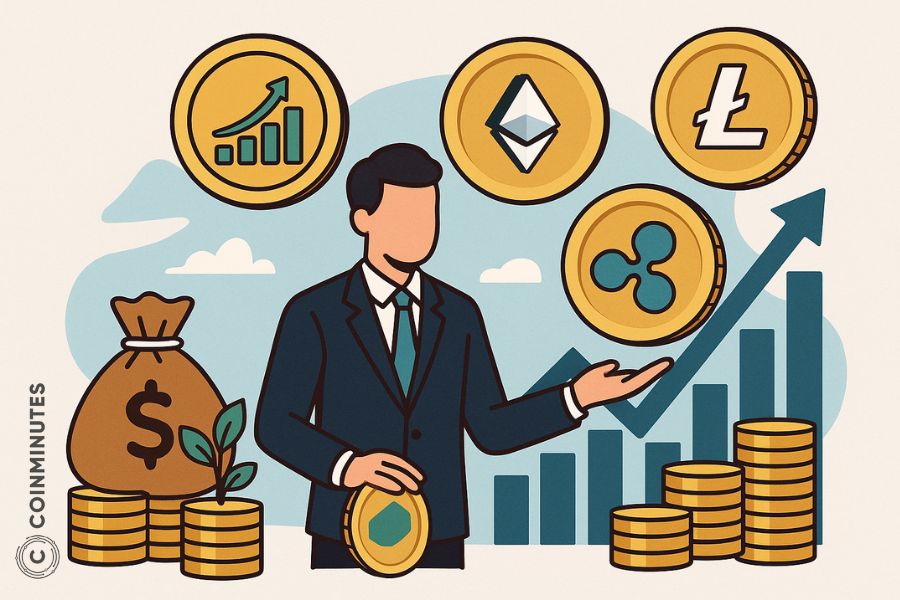
Key Risks to Consider
Now for a healthy dose of reality. Altcoins are the definition of high-risk, high-reward.
The number one risk is volatility. I am not exaggerating when I say an altcoin can lose 30% of its value while you're making lunch. It is a brutal, stomach-churning experience. A 2024 report from the blockchain analytics firm Chainalysis highlighted that crypto-related crime, including scams and hacks, still accounts for billions of dollars in losses annually. This shows how dangerous the environment can be if you're not careful. You have to be okay with watching your investment get cut in half, or even more.
The next risk is that most of these projects will simply fail. Think of every altcoin as a tiny tech startup. And what do most startups do? They go out of business. They run out of money, their tech doesn't work, or a better competitor comes along. The crypto graveyard is filled with coins that were once in the top 100.
And of course, there are the scams. Because this space is new and not fully regulated, it's a paradise for scammers. They create coins with no purpose, use social media to hype them up, and then disappear with everyone's money. This is called a "rug pull," and it happens every single day.
So here's the golden rule, and I want you to repeat it to yourself: Never, ever invest more money than you are willing to lose completely.
How to Find the Best Altcoins to Invest in
Okay, so how do you pick a good one without just throwing a dart at a board? You need a system. A simple checklist to run through before you even think about clicking the "buy" button.
Key Factors to Consider
I've learned the hard way that a little bit of research upfront saves a lot of pain later. Here's a quick checklist I run through in my head when I look at a new project.
- What does it actually do? (The Use Case): Does this coin have a job? Is it the fuel for a network? Does it let you vote on things? Does it unlock a service? Or is it just a digital pet rock with a funny name? A coin with a real purpose is more likely to stick around.
- Who's behind the curtain? (The Team & Community): Are the creators real people with names and LinkedIn profiles, or are they anonymous cartoon characters on Twitter? A public, experienced team is a good sign. Then, check out their community. Are people actually using this thing and talking about it in a smart way, or is it just a bunch of "wen moon?" emojis? A strong community is a huge plus.
- What's the money situation? (The Tokenomics): This sounds complicated, but it's not. You just need to ask: How many coins are there in total? Are they constantly making more (inflation)? This stuff matters. If a project is printing millions of new coins every day, it's going to be hard for the price to go up.
- How big is it already? (The Market Cap): Market Cap is just the coin's price multiplied by how many coins are out there. It tells you the total value of the project. As a beginner, you should probably stick with the big guys, the large-cap coins in the top 50 or so. They're like the blue-chip stocks of crypto. They're still risky, but they're less likely to disappear overnight than some coin you just heard about.
Common Mistakes to Avoid
Knowing what to look for is half the battle. Knowing what not to do is the other half.
- Chasing the Green Candle (FOMO): You see a coin is up 200% in the last 24 hours and your brain screams, "GET IN NOW!" Don't. You are almost certainly late to the party, and you're about to become someone else's exit strategy.
- Trusting "Influencers": Most of the crypto people on YouTube, TikTok, or Twitter are not your friends. They are often paid to promote coins or are just trying to pump the price of coins they already own so they can dump them on you. Do Your Own Research (DYOR) is the most important acronym in crypto.
- Betting the Farm: I'm going to say this a few times. Do not invest money you can't afford to lose. I'm serious. Don't use your rent money. Don't use your emergency fund. Only invest what you would be okay with, in a worst-case scenario, setting on fire.
- Putting All Your Eggs in One Basket: You might find a project you absolutely love, but don't go all-in on it. Spreading your bets across a few different solid projects is a much safer way to play the game.
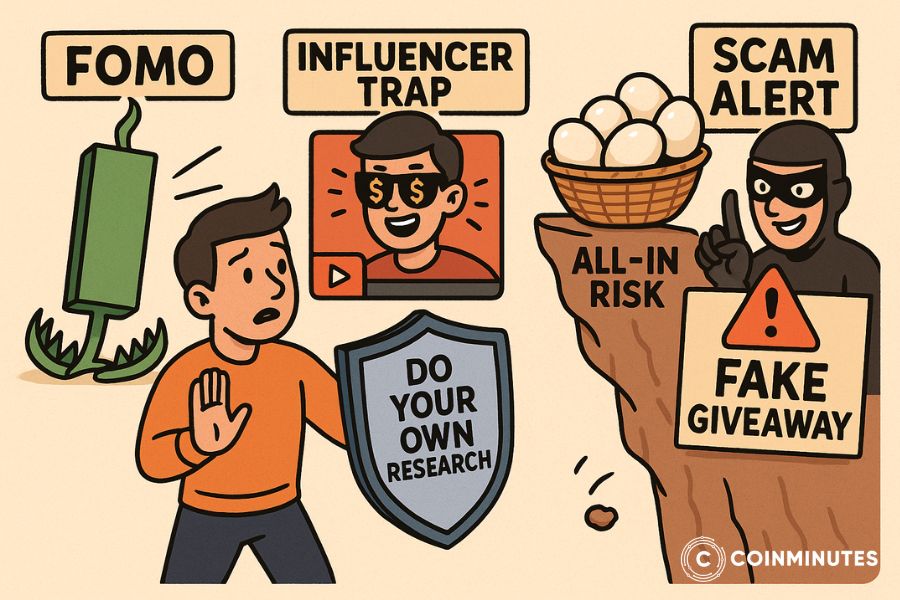
Preparing to Buy Altcoins: What You Need
Before you can click that "buy" button, you need to get your gear in order. There are two things you absolutely need before you start.
Setting Up a Secure Wallet
This is the most important part of the entire process. Get this right, and you're ahead of 90% of beginners.
A crypto wallet is where you'll store your coins. You need one that you, and only you, control. There are two main kinds:
-
Software Wallets (Hot Wallets): These are apps you can get for your phone or computer. The most popular one is MetaMask, which is a browser extension. They're called "hot" because they're always connected to the internet. They're super convenient for day-to-day use, but that also makes them more vulnerable to hackers. A hot wallet is like your real-life wallet that you keep in your pocket—great for a little bit of spending cash.
-
Hardware Wallets (Cold Wallets): These are small physical devices, made by companies like Ledger or Trezor, that look like a fancy USB stick. They're called "cold" because they keep your crypto keys stored completely offline. This makes them incredibly secure. A hardware wallet is your personal bank vault.
My personal advice? If you're going to invest more than a few hundred dollars, a hardware wallet isn't optional. It's a must-have. Just buy one.
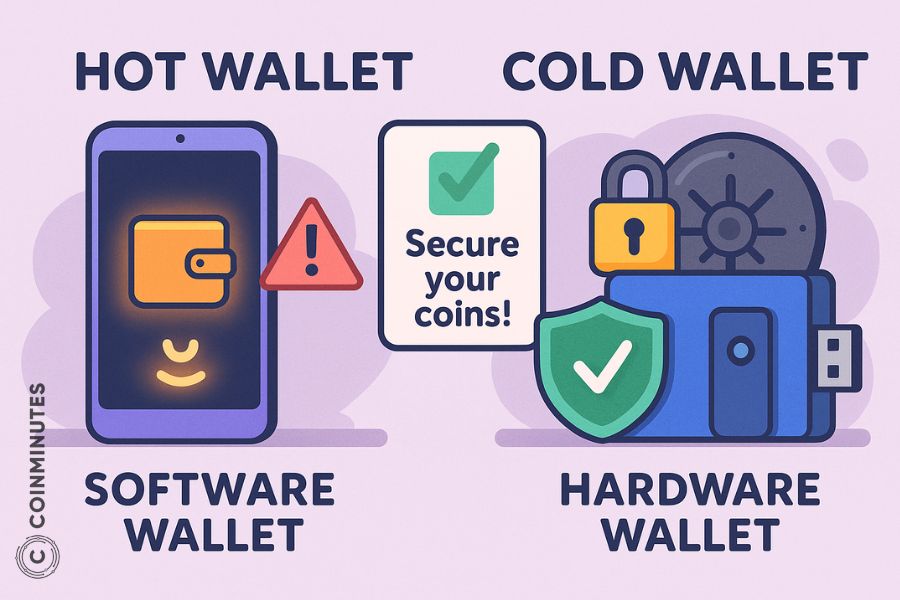
Understanding KYC and Regulation
Gone are the days when you could buy crypto with just an anonymous email. The major exchanges are now regulated businesses, and they have to follow the rules. That means they need to know who their customers are.
This process is called Know Your Customer (KYC).
To get verified on an exchange, you'll have to provide some personal info, including:
-
Your name, address, and birthday
-
A picture of a government ID, like a driver's license
-
Probably a selfie to prove you're a real person
It's a bit of a pain, I know. But it's a good thing. It helps prevent illegal activity and gives you, the consumer, some level of protection. Using an exchange that follows KYC rules is a sign that they're a legitimate business.
Step-by-Step Guide: How to Buy Altcoin Safely and Easily
Okay, prep work is done. You have your secure wallet ready to go, and you're ready to get verified. Here's the simple, five-step playbook for buying your first altcoin.
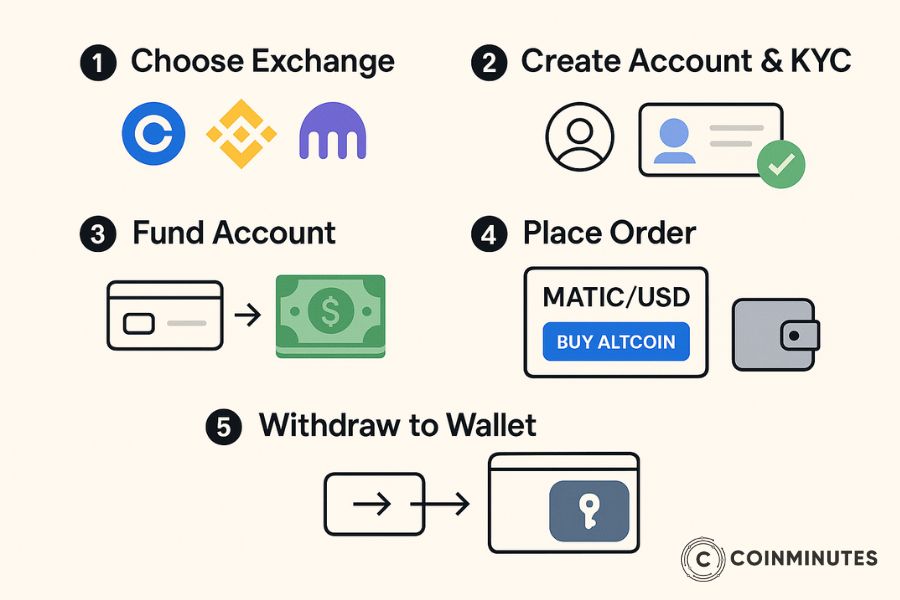
Choosing a Reliable Crypto Exchange
A crypto exchange is just the store where you go to buy crypto. There are hundreds of them, but you should absolutely stick to the big, well-known ones when you're starting out.
-
Centralized Exchanges (CEXs): These are companies like Coinbase, Binance, and Kraken. They're run like normal businesses and are your best bet as a beginner. They're easy to use and connect directly to your bank account.
-
Decentralized Exchanges (DEXs): These are platforms like Uniswap. They're not run by a company but by code on the blockchain. They have way more coins, but they're also way more complicated. Leave these alone until you're more experienced.
Action Step: Go sign up for an account on a major, reputable CEX like Coinbase. It's one of the most beginner-friendly options out there.
Creating and Verifying Your Account
This is pretty straightforward. You'll sign up with your email and then start the KYC process. Have your driver's license handy.
But please, do two things here. First, use a strong, unique password that you don't use anywhere else. A password manager can help with this. Second, turn on Two-Factor Authentication (2FA) immediately. This adds a crucial layer of security to your account. Use an app like Google Authenticator, not just SMS.
Funding Your Exchange Account
Now you need to put some cash in your account. You can usually do this with a bank transfer or a debit card. A debit card is usually faster but has slightly higher fees.
Action Step: Connect your payment method and deposit a small amount of money to start. Seriously, start small. Maybe $50 or $100. Something you would be sad, but not devastated, to lose.
Placing Your First Altcoin Order
This is the fun part. You have money on the exchange, and you're ready to pull the trigger. Let's say you want to buy some Polygon (MATIC).
-
Step 1: Find the "Trade" or "Market" section on the exchange.
-
Step 2: Search for the coin you want. Since you deposited dollars, you'll be looking for the MATIC/USD pair.
-
Step 3: You'll see a couple of order types. For now, just focus on Market Order. This is the simplest option. You just type in how much money you want to spend (e.g., $50), and it buys the coin for you instantly at the current market price.
-
Step 4: Click the "Buy" button and confirm the transaction.
And that's it. You've done it. You now own your first altcoin.
Withdrawing Altcoins to Your Wallet
DO NOT SKIP THIS STEP.
I know it's tempting to just leave your shiny new coins sitting on the exchange. It seems easy. But it's also the single biggest mistake beginners make.
When your coins are on an exchange, you don't really control them. The exchange does. If they get hacked, go bankrupt, or just freeze your account, your coins could be gone. The only way to truly own your crypto is to hold it in your own wallet.
Here's what you do:
-
Step 1: Go to the "Withdraw" section of the exchange.
-
Step 2: Select the coin you just bought (MATIC).
-
Step 3: Open your personal wallet (the one you set up earlier) and find your "Receive" address for that coin. It will be a long string of letters and numbers.
-
Step 4: Copy that address. Be very careful.
-
Step 5: Paste that address into the "withdraw to" field on the exchange.
-
Step 6: Enter the amount and confirm. Always send a small test amount first! Send like $5 worth. Wait for it to show up in your personal wallet. Once you confirm it arrived safely, you can send the rest.
Safety Tips for Buying and Storing Altcoins
The crypto world is full of people who want to take your money. You have to be paranoid. Here are the most important rules.
Protecting Your Private Keys and Seed Phrases
Your seed phrase (those 12 or 24 words) is the master key to all your crypto.
-
NEVER share it. Anyone who asks for it is a scammer. Full stop.
-
NEVER type it into a computer or phone. Don't save it in a text file, don't email it to yourself, don't take a picture of it.
-
Write it down on paper and hide it somewhere safe. Or better yet, stamp it into a piece of metal. Make multiple copies and hide them in different places.
If you lose your seed phrase, your money is gone. If someone else finds it, your money is gone.
Avoiding Common Scams and Phishing Attempts
Scammers will try to trick you into giving them your information. They will send you fake emails that look like they're from Coinbase. They will DM you on Twitter or Telegram pretending to be customer support. They will post fake giveaways from "Elon Musk."
It's all fake. Trust no one. Never click on suspicious links.
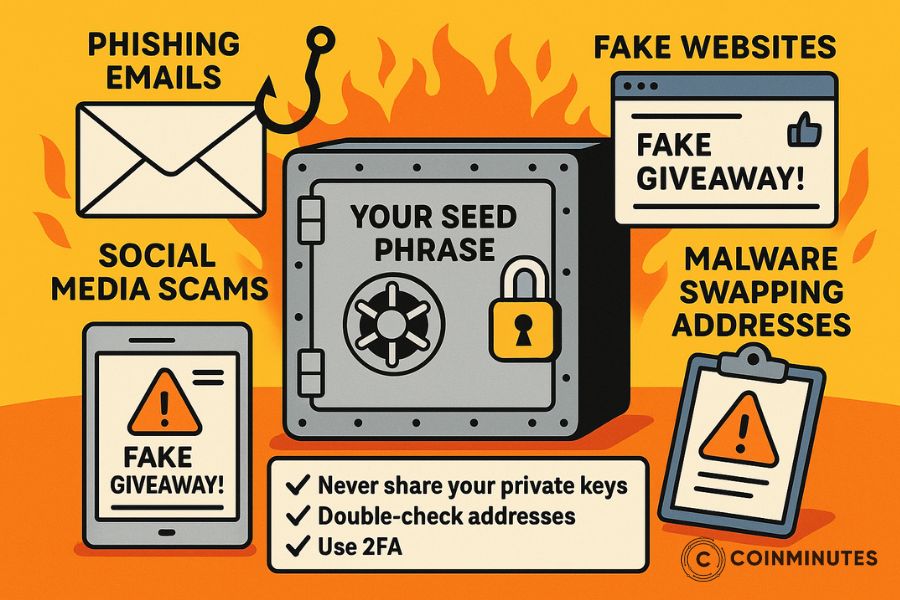
Double-Checking Addresses and Transactions
When you send crypto, the transaction is final. There's no "undo" button. Before you hit "send," always double-check the first 4 and last 4 characters of the wallet address you're sending to. There is malware that can change the address you've copied without you realizing it.
Using Two-Factor Authentication and Strong Passwords
I'm saying it again because it's that important. Use a unique password and set up 2FA using an app like Google Authenticator on every single crypto account you have.
Continue Your Crypto Journey with CoinMinutes
So, what are the "best" altcoins to invest in?
The boring but true answer is: the ones you've actually taken the time to research and understand. The ones you believe have a real shot at being useful in the long run.
This list isn't a shopping list; it's a starting line. It's a collection of the big, established players that are less likely to pull a disappearing act. Your job now is to dig in, read up, and figure out which of these projects, if any, make sense to you. At CoinMinutes, we're here to give you the straight scoop so you can make better decisions. Good luck out there.
 English
English
 Vietnamese
Vietnamese

